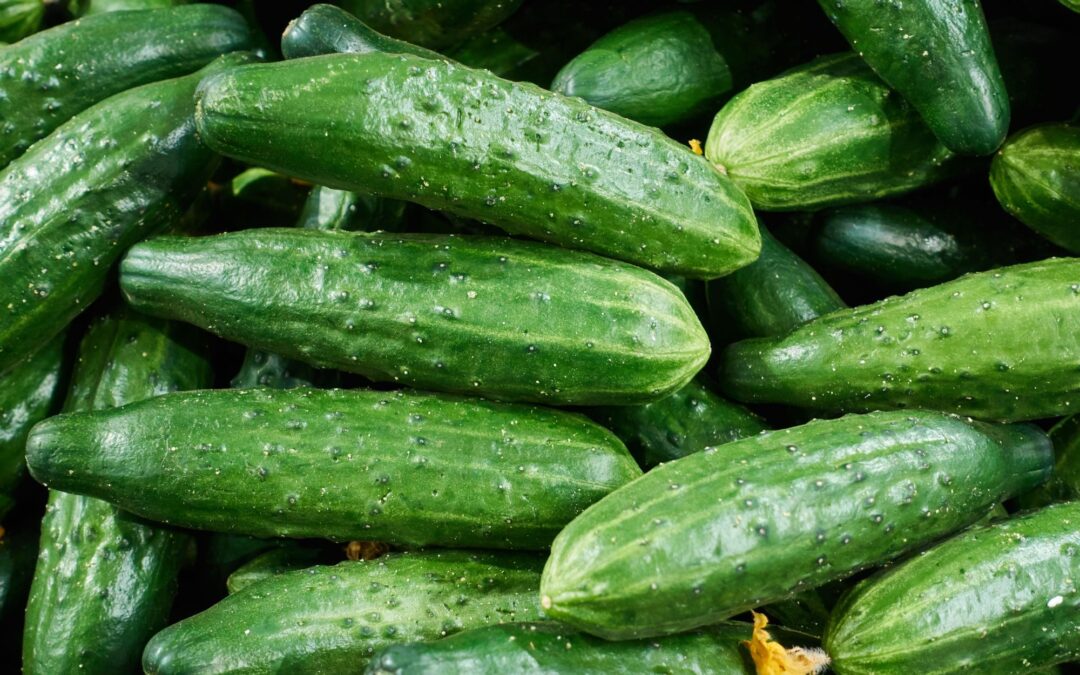Follow Up Article – Verify Your Suppliers! A 2 part article
Cucumbers and Salmonella – Irrigation Water the Likely Culprit
Part 1: Cucumbers and Salmonella
The United States Food and Drug Administration (FDA) and the Centers for Disease Control (CDC) confirm a foodborne illness involving Salmonella, cucumbers and contaminated irrigation waters. 449 people became ill, 125 of them hospitalized. No deaths have been reported. This outbreak spread across 31 States (see map on the cdc.gov link below).
A connection was established between this illness and two cucumber growers in Florida. The Salmonella strain isolated from ill people was collected from canal water used to irrigate the cucumbers, as well as soil and water from the sites of both growers. According to the FDA and CDC, the two cucumber growers have stopped production for the season and no products remain on market shelves. (To be certain, contact your produce supplier).
As always, our purpose here is to discuss this illness and what readers can do to protect against problems of this sort. This article discusses the cucumber outbreak and gives details about Salmonella. The next article discusses the problems encountered with irrigation waters and methods for resolving them.
The links below give more details about the cucumber foodborne illness:.
https://www.cdc.gov/salmonella/africana-06-24/details.html
The Food and Drug Administration has posted a fact sheet about Salmonella which might be useful for anyone with concerns about the illness.
A Refresher about Salmonella:
Salmonella causes two kinds of illness: nontyphoid illness; and typhoid fever. Only a small number of bacteria are needed to cause illness: only one organism (nontyphoid) to under 1000 (typhoid illness).
Important Note: The small number of bacteria needed for illness emphasizes the importance of (a) cleaning thoroughly to remove biofilms (environmental niches where bacteria can hide and grow) and (b) cleaning and sanitizing all surfaces and equipment thoroughly. In some cases, time at unsafe temperatures might not be needed to produce an illness! Contamination from a soiled knife or hands might be enough.)
Nontyphoid illness (nausea, cramps, diarrhea, fever) usually occurs within 6-72 hours after the contaminated food is eaten, with symptoms lasting 4 to 7 days (1 to 2 days longer in severe cases). In otherwise healthy people, the symptoms usually go away by themselves, but long term arthritis may develop in approximately 2 percent of the cases. As with many foodborne illnesses, dehydration and vomiting can lead to death in highly susceptible patients (young, elderly, immunocompromised).
Typhoid fever (high fever, aches, lethargy, diarrhea) is more serious and up to 10% of the ill who do not seek treatment may die. This illness usually is associated with sewage-contaminated drinking water or crops irrigated with sewage-contaminated water (as in this case with cucumbers). Some pets can carry the bacteria which can spread to anything that comes in contact with the pet. The bacteria is hard to wash off food, even with soapy water, so important control measures include thorough cooking, hand washing, keeping raw foods separate from cooked foods, preventing bare hand contact with ready to eat foods and observing safe cooking and storage temperatures.
Important Note: typhoid fever may not cause illness for anywhere from 1-3 weeks to 2 months after eating the food. Further, after the illness subsides, most healthy people may carry the bacteria for 12 weeks with others carrying it three months (10%) or permanently (2-5%). This real possibility of healthy human carriers makes employee health and hygiene monitoring an important part of food safety programs.
Salmonella Sources in Nature:
Salmonella is widely dispersed in nature, in many animals as well as soil and water. It can stay in adverse conditions such as dry soil and be carried to food and surfaces by the air stream. While most people associate Salmonella illness with raw animal foods, there are more documented illness cases involving produce (31% versus 25%). The organism survives well on low-moisture foods, such as spices, and these have been the source of large outbreaks. A few examples of foods linked to Salmonella illness include meats, poultry, eggs, milk and dairy products, fish, shrimp, spices, yeast, coconut, sauces, fresh prepared salad dressings made with unpasteurized eggs, cake mixes, cream-filled desserts and toppings that contain raw egg, dried gelatin, peanut butter, cocoa, produce (fruits, vegetables, tomatoes, peppers and cantaloupes, cucumbers) and chocolate.
END OF PART ONE. PART TWO, ABOUT IRRIGATION WATERS, WILL FOLLOW SHORTLY.

